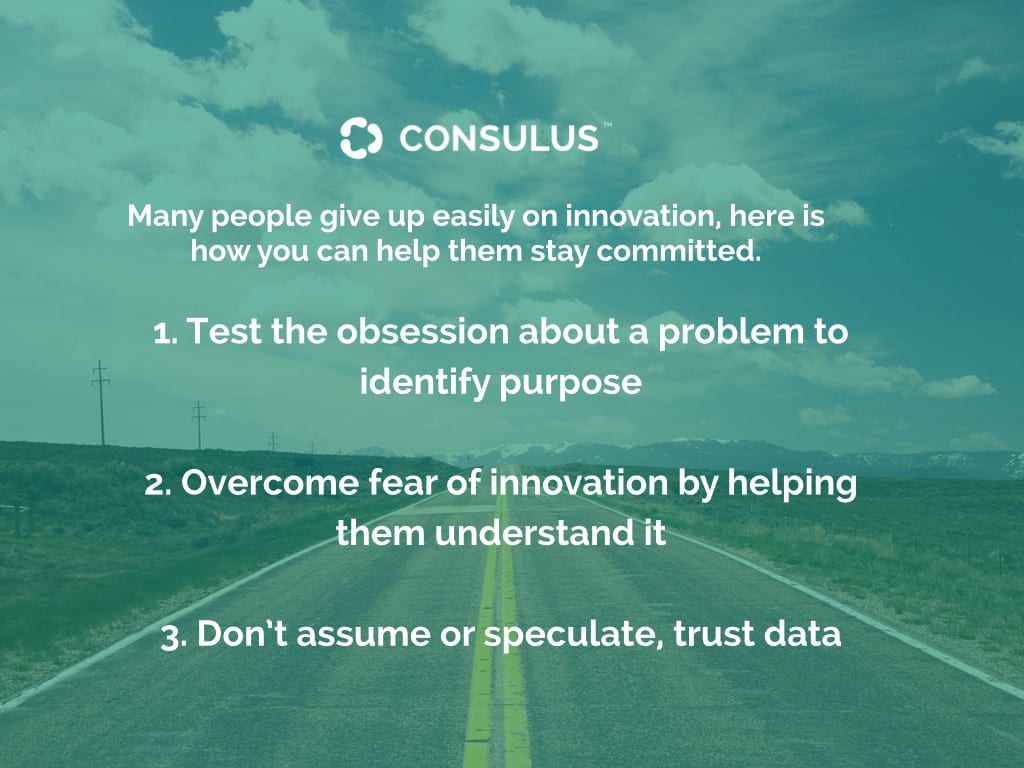Innovation is a long journey that will involve many episodes of failures, fears and false starts. Here are some 3 essential elements, on how to take a realistic approach so as to reap sustained results from the process.
I think I have gone around them the fourth time. I decided to stand at the end of the conference table once more, just to make sure that they will look perfect. For two months now, we have been working with a cake designer to change the cake designs of a confectionery brand in Singapore. These designs are simpler and have been designed to appeal to women who crave for small and indulgent delights. So today, we are going to introduce the new concept to the staff at the factory. I felt like a proud father waiting to present my beautiful daughters.
So we opened the door and ushered the staff into the conference room. Together with the client, we then explained the purpose of this presentation. The atmosphere was not quite what I had expected. The staff had no comments and it felt more like a funeral than a joyous occasion. The session ended quickly but the client assured me that this was the first time in years that they had seen a change in the cake designs so do give them some time. After about a week, the client called to say that, while the designs are certainly in the right direction and they do believe in the strategy, they will stick to the old concept for now and introduce these designs later. I was shocked and my partner asked: ” Why would people not do something even though they know that it is essential?”
This question has been one of the big puzzles about organisational behaviour that has guided the evolution of our work. Back to the cake designs; our mistake was to focus too much on the products but we failed to take into account, the concerns of the two key stakeholders. First the staff: What they saw was not just designs but about how hard it would make their work since they already work long hours. Because they could not comprehend how it would impact their cake decoration workflow, they collectively voted for a no.
Then when it came to the client, because they have been achieving financial success with the existing cake designs, the motivation to change was not there. Furthermore, this was still the time when not many confectionery brands had introduced a simpler and modern type of design. So they took the staff’s rejection as a sign that the market will most likely reject them.
Looking back, I was personally grateful for this failed experience thirteen years ago. This failure guided us in the right way and taught us an important lesson: That an idea alone is not enough; without people and process, it will not be designed for success. To reduce the likelihood of miscarriages of innovation not being carried to term, we have applied the following three elements:
1. Test the obsession about a problem to identify purpose
The cake experience taught us that vision alone is not sufficient, it is important to assess the organisation’s level of obsession about solving a problem. That will then help us evaluate how determined they will be during the process of innovation. So we started reviewing their plans, their processes and in our interviews, we looked out for the aspects of obsession. Whenever we have assessed accordingly and helped them build relevant organisational structures and processes, these organisations continue to thrive and profit from innovation long after we are gone.
Likewise in your case, what are you and your staff obsessed about? Your conversations, time spent and past processes or projects will be a reliable guide. Figure that out and you will most likely reap the most if you focus on your innovation efforts. Don’t simply follow the trends and opportunities.
2. Overcome fear by helping them understand it
The most challenging element in any innovation exercise is dealing with fear. Will this work? How will this impact my job? Will the market be ready? These are the questions that you must be prepared to answer or provide assurance when you are going to embark on an innovation exercise. We often spend much time assuring senior management in numerous private conversations to keep them focused. It certainly helps that in our ranks we have senior consultants who have served as CEOs at large regional firms. This helps the clients to think through the consequences and come to a realistic conclusion. Many a times, CEOs have little avenues to express their concerns, especially those relating to their company so these conversations help.
For the staff, we spend much time, describing to them the impact of their work and explaining to them what it means, when this process of innovation becomes operationalised. Instead of a directive approach, we would organise workshops where we develop scenarios and questions so that they can answer it. It might be slower but we have learned that it is the staff’s opinion that is more important than the consultants even if the latter had thought of the solution. Then harnessing those opinion, we would build a winning case that is supported by insiders.
If you are conducting innovation exercises on your own, what it means is: you have to understand that you have to keep fear under control. Fear is not a bad thing but if left unattended, it will not give room for any innovation. So nothing replaces frequent communication and the ability to build an internal alliance within the company to support innovation.
3. Don’t assume or speculate, trust data
When people are opposed to an innovative idea, they will most likely say: my experience tells me that this will not work. So the way to avoid this is to review past data objectively but if it is not possible, to suggest testing out the idea on a small scale. The truth is, most organisations have never measured how their ideas perform as they do not even have a framework to begin with.
It is always best to let the market decide rather than conclude that it will not work by speculation or assumption. We usually set up the criteria for success and then deploy the idea accordingly. Th criteria ensure that everyone understands the purpose of the idea and subjects it to scrutiny so that it can be improved further. By implementing a framework and data-driven approach, we have helped to debunk many assumptions. The clients will then develop the confidence to do this on their own.
In your case, define the criteria for your innovation project. How will it help you to secure more customers or make it more efficient? After you have tested it, review the criteria and see if you have missed out anything. Keep reviewing and testing even after you have launched the product or service. The truth about innovation is, it is often a humbling experience and it requires commitment and openness for success.
Happy innovating and here is a summary slide to help remind you:
This article was also published on LinkedIn Pulse.





